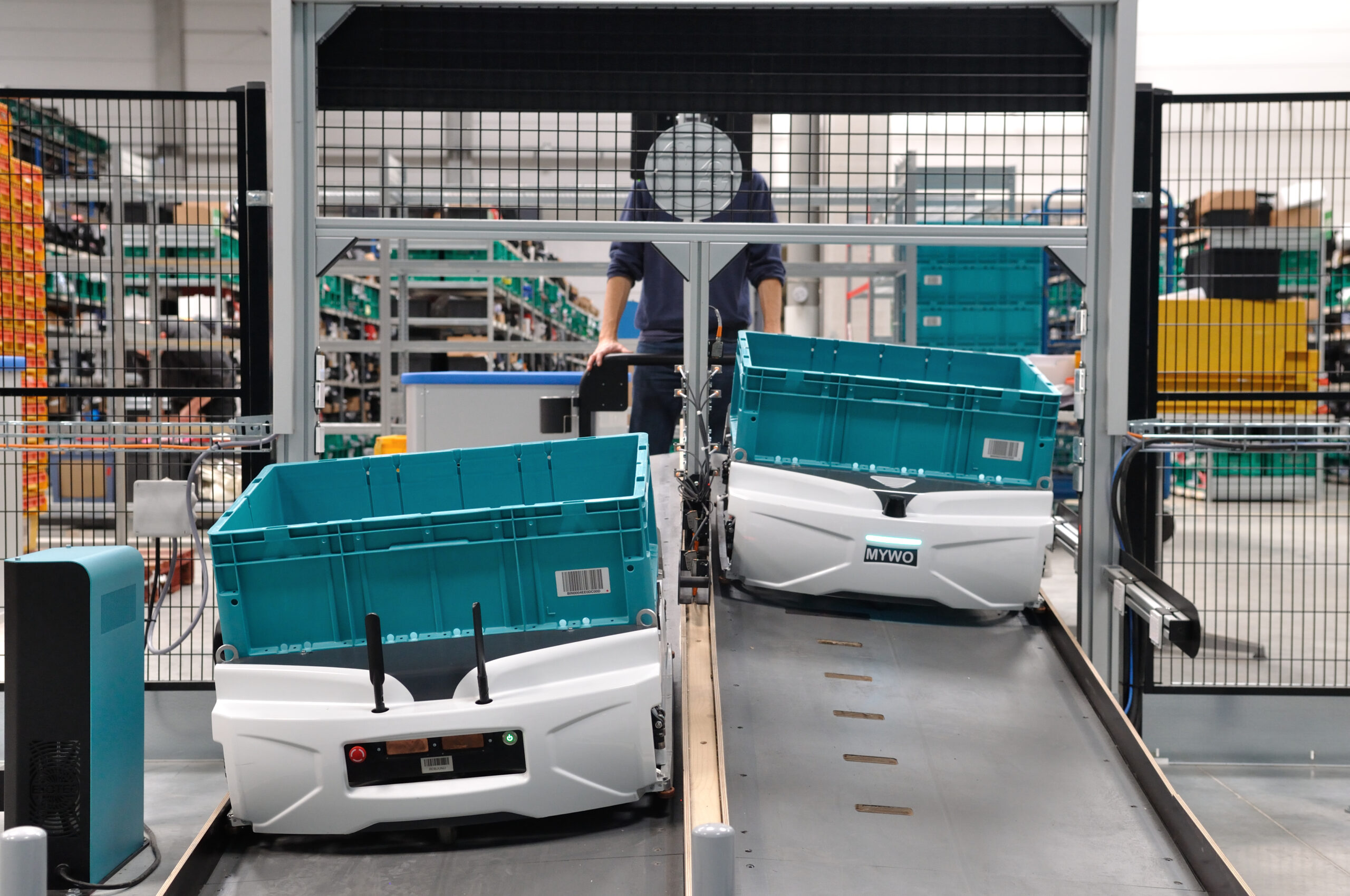Each year, DeliveryX starts to look ahead to the coming new year in a series of predictions. Simon Jones, sales executive at Exotec has outlined his warehouse automation trends for 2024.

The warehouse automation market is expected to continue to grow by around 15% annually between now and 2027. As we look ahead to 2024, there are a number of trends that will not only drive this growth, but also determine the direction in which the sector is evolving.
Automation and 3PLs
Third-party logistic companies (3PLs) play a major role in the UK logistics sector; particularly in ecommerce fulfilment and retail replenishment. In the past, if they have used warehouse automation for a contract, it has usually been owned by their customer, and often the building is too.
More recently, some 3PLs have been using person-to-goods automation and “Kiva style” shelf-to-person systems for suitable contracts, to provide their customer with some limited productivity improvements.
In 2024 we will begin to see 3PLs starting to offer their customers the opportunity for considerable cost reduction by utilising more sophisticated, higher performance robot-based ASRS tote solutions. Although requiring a higher initial outlay, the throughput, productivity and storage density improvements delivered by such systems mean that the value and cost reduction for a 3PL’s customers will be difficult to resist.
The benefit of high performance robot-based ASRS solutions can be leveraged even further by 3PLs when used in their multi-customer sites. Some 3PLs are taking this step to ensure their success in the future. This will allow them to provide customers large and small with ultra-fast order cycle times, very low unit fulfilment costs and rapid processing of returns into sellable stock.
On the other side of the coin, retail customers will put increasing pressure on their 3PL partners to drive down storage and unit fulfilment costs in real terms, citing high throughput flexible automation as the means to achieve this.
Ongoing retail and ecommerce demands
Ecommerce continues to be an increasingly popular way for people to shop, putting enormous pressure on the supply chain as shoppers expect to receive their orders as quickly as possible. For the UK in particular, the ecommerce market is expected to grow by almost 22% each year between 2023 and 2028.
Retail stores won’t be going away any time soon either. There remains significant demand for physical premises in many retail segments, so there is a need to maintain consistent stock levels.
Managing both ecommerce and retail operations in the same warehouse can be tricky, especially when using automation. However, we expect to see an increasing number of organisations doing this, as the presence of flexible robotics systems makes it much easier to operate fulfilment for both ecommerce and store replenishment from the same site and even in the same automation.
The potential cost savings from the use of a single automation system to handle both ecommerce and physical retail are huge, with some of the benefits including no duplication of stock and a much smaller warehouse footprint, leading to big savings on property costs.
Labour shortages will persist
At the start of 2023, I shared that labour shortages will define this year for the warehouse and logistics industry, and this challenge isn’t going away any time soon. If anything, the labour shortage will get worse, even if the economy slows a little.
Businesses are experiencing high turnover levels and are struggling to plug the skills gap as a result of the nature of warehouse work. This in turn makes it more difficult for the remaining workers. Warehouse operators that are still using outdated mostly manual systems will feel a squeeze on their labour force in 2024 – and that’s where modern automation comes in.
Employing robotic solutions solves challenges that businesses are experiencing now and into the coming year. For example, mundane, repetitive and labour-intensive tasks can be completed by robots. This can help warehouse operators keep up with shifting consumer demand, while reducing the strain on their employees.
If businesses are to retain their staff and encourage new people to join at a time when people are looking for stable, fulfilling and safe work, they must implement systems that foster a secure environment.
2024 will no doubt bring about challenges for the warehouse and logistics industries, however there will be plenty of reward for those that get ahead, assess their current operations and implement innovative strategies to meet customer and consumer demands.
Simon Jones, sales executive, Exotec









